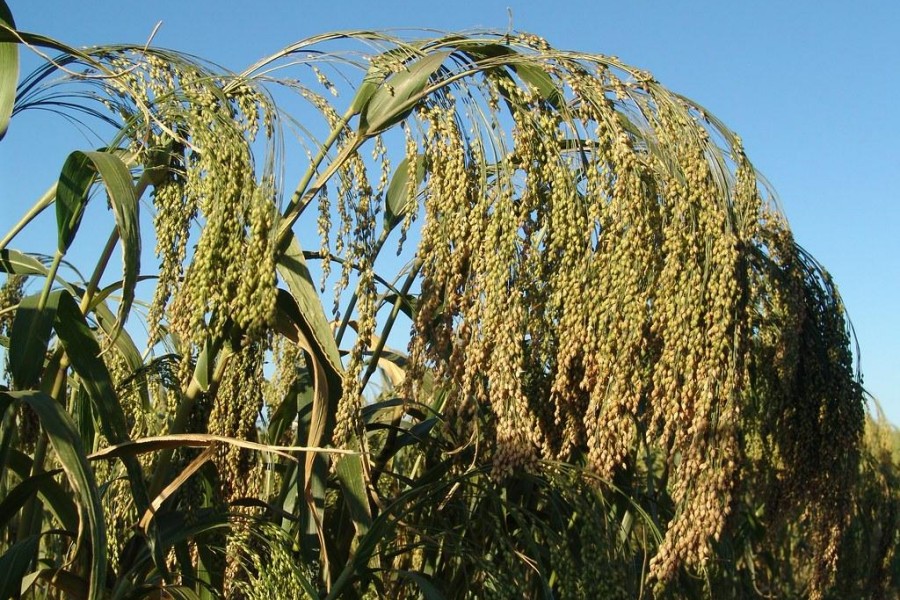Foxtail and broomcorn millet (Setaria italica and Panicum miliaceum) are vital cereal crops originating in northern China, where early millet agriculture significantly supported the development of early societies and the rise of civilization in the Yellow River and West Liao River basins. Today, foxtail and broomcorn millet remain key crops in China and worldwide due to their resilience to drought, heat, and poor soil conditions, increasingly becoming essential for global food security amidst climate change and extreme weather challenges.
Since the turn of the century, research on the origins and spread of foxtail and broomcorn millet has made considerable progress. Thanks to excavations at sites from the transitional Palaeolithic to Neolithic periods and the early to middle Neolithic periods across the southern and northern Yanshan, Taihang, Songshan, and Tai-Yi mountain ranges, as well as the western Loess Plateau, combined with multidisciplinary approaches—such as archaeobotany, radiocarbon dating, residue analysis, geoarchaeology, and paleodiet reconstruction via stable carbon and nitrogen isotope studies—the cultivation and use of foxtail and broomcorn millet by early northern Chinese populations have been traced back 10,000 years or more. This body of work has allowed scholars to outline the basic spatiotemporal framework of the origins and development of early dry farming in northern China.
In the past decade, the spread of early foxtail and broomcorn millet has become a focal topic in archaeology both in China and beyond. It is generally believed that millet was domesticated during the Yangshao period, and by the Miaodigou phase, a subsistence mode based on millet agriculture and pig husbandry was well established across the Yellow River basin, centred in the Central Plains, and soon spread to surrounding areas. Recently accumulated archaeobotanical evidence shows that by around 5,000 years ago, foxtail and/or broomcorn millet had spread southward to southwest, southeast, and southern China; westward to the Huangshui River Valley of the northeastern Tibetan Plateau; and northeastward to the Heilongjiang (Amur) River basin and the Russian Far East. However, paleodiet analysis based on human bone carbon and nitrogen isotopes reveals considerable variation in millet's contributions to human diets across these regions during this period.
By contrast, the spread of millet across Eurasia has been less studied due to its vast geographical and temporal scope, the diversity of materials involved, and complex content, compounded by insufficient application of scientific methods. As a result, the early use of millet and the introduction and development of millet agriculture in central and western Eurasia remain under-researched. Additionally, studies on early crop dispersal have historically focused on the routes, timing, and pace of crop spread, with less attention to the human behaviours and social factors driving crop dispersal, such as motivations behind crop spread, the selective adoption or rejection of crops within different socio-cultural systems, and the social organization and field management practices associated with crop cultivation. In recent years, however, with increased international collaboration, multidisciplinary research, and a renewed understanding of early millet agriculture's importance, the study of early millet remains across central and western Eurasia has expanded. This progress enables us to explore millet’s early dispersal and social significance on a large scale, over long periods, and from diverse perspectives.
This project aims to present a picture of the early spread of foxtail and broomcorn millet, originating from northern China, across the central and western parts of the Eurasian continent. This is achieved through multidisciplinary research on key archaeological sites in Central Asia, South Asia, and Eastern Europe that are related to foxtail and broomcorn millet, as well as by systematically summarizing and organizing published evidence of early millet use in the central and western Eurasia. The study incorporates relevant archaeological contexts and ethnographic materials. Multidisciplinary methods include, but are not limited to, dating, archaeobotany (macro and micro plant remains), bone and plant stable carbon and nitrogen isotope anlysis, residue analysis based on biomarkers, and plant impressions. This research strives to map the early dissemination routes of foxtail and broomcorn millet across the Eurasian continent and to reveal the motivations behind the early westward transmission of these crops. Furthermore, the study will promote the application of multidisciplinary methods in the research of the spread of millet agriculture and foster international cooperation in the study of the origins and early dissemination of millet.
